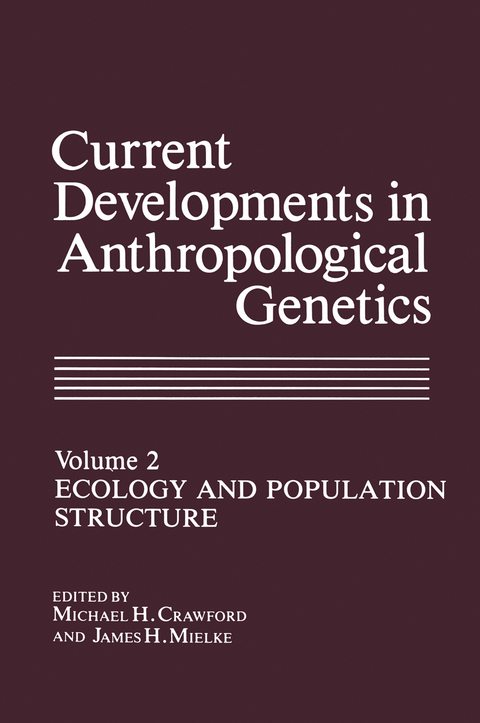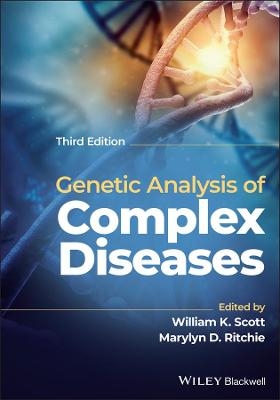
Current Developments in Anthropological Genetics
Kluwer Academic/Plenum Publishers (Verlag)
978-0-306-40842-7 (ISBN)
- Titel z.Zt. nicht lieferbar
- Versandkostenfrei innerhalb Deutschlands
- Auch auf Rechnung
- Verfügbarkeit in der Filiale vor Ort prüfen
- Artikel merken
1. Primate Social Organization, Ecology, and Genetic Variation.- 1. Introduction.- 2. The Comparative Method: Fantasy and Fact.- 3. Models of Ecology and Behavior.- 4. Implications for Genetic Research.- 5. Population Structure of Cayo Santiago.- 6. Conclusion.- References.- 2. Population Structures of Ghanzi and Ngamiland !Kung.- 1. Introduction.- 2. Previous Research.- 3. Study Populations.- 4. Methods.- 5. Fertility.- 6. Social Patterns.- 7. Mortality.- 8. Conclusions.- References.- 3. Population Structure of Circumpolar Groups of Siberia, Alaska, Canada, and Greenland.- 1. Introduction.- 2. Methods.- 3. Results.- 4. Conclusions.- References.- 4. Ecology and Biological Structure of Pastoral Isseqqamaren Tuareg.- 1. Introduction.- 2. Pastoralists in an Hyperarid Area.- 3. Social and Geographic Structures.- 4. Other Aspects of Isseqqamaren Dynamics.- 5. A Field Example of Biological Studies in Tuareg Isseqqamaren: Marriages in Ideles.- 6. The Tuareg Isseqqamaren Gene Pool: Preliminary Results for Some Genetic Markers.- 7. Conclusion.- References.- 5. The Population Structure of the Romany Gypsies.- 1. Introduction.- 2. Historical Background.- 3. Demography.- 4. Genetic Structure.- 5. Discussion and Conclusion.- References.- 6. Genetic Architecture of Swidden Agricultural Tribes from the Lowland Rain Forests of South America.- 1. Introduction.- 2. Swidden Agriculture and its Social Concomitants.- 3. The Survival of New Mutations.- 4. Fission Effects in the Formation of New Villages.- 5. The Genetic Consequences of Fusion and Exogamy.- 6. The Production of Tribal Infrastructure and the Evolutionary Radiation of Tribes.- 7. A Prospectus for Future Work.- References.- 7. Genetic Structure of the Semai.- 1. Introduction.- 2. The Semai Senoi People.- 3. Semai Local Populations.- 4. Semai Marriage Patterns.- 5. Semai Demography.- 6. Fission-Fusion and Lineal/Kinship Effect.- 7. Kin-Structured Migration.- 8. Genetic Variation.- 9. Conclusions.- References.- 8. Spatial Autocorrelation Analysis of Biological Variation on Bougainville Island.- 1. Introduction.- 2. Materials.- 3. Spatial Autocorrelation Analysis.- 4. Results.- 5. Discussion.- References.- 9. Linguistic, Ecological, and Genetic Differentiation in New Guinea and the Western Pacific.- 1. Introduction.- 2. The North Solomons.- 3. New Guinea.- 4. The Gm Hypothesis.- 5. Kar Kar Island.- 6. Northern Populations in PNG.- 7. A Broader Picture.- References.- 10. Historical Population Structure of the Åland Islands, Finland.- 1. Introduction.- 2. Sources for Fenno-Scandian Historical Demography.- 3. Historical Background.- 4. Åland Population Structure: Parish Level.- 5. Åland Population Structure: Village Level.- 6. Household and Family in Åland.- 7. Summary and Conclusions.- 11. Genetic Microevolution in the Åland Islands, Finland.- 1. Introduction.- 2. Genetic Analysis.- 3. Migration Analysis.- 4. Migration—Genetics Interaction.- 5. Summary and Conclusions.- References.- 12. Population Structure of Farming Communities of Northern England.- 1. Introduction.- 2. Northumberland.- 3. The Coming of Industry.- 4. Cumbria.- 5. Conclusion.- References.- 13. Population Structure and Anthropometric Variation in Ireland during the 1930’s.- 1. Introduction.- 2. Anthropometric Traits in Population Studies.- 3. Materials, Hypotheses, and Methods.- 4. Results and Discussion.- 5. Conclusion.- References.- 14. Population Structure of a Religious Isolate: The Dariusleut Hutterites of Alberta.- 1. Introduction.- 2. Population Genetic Structure.- 3. Perspectives.- References.- 15. Kinship andInbreeding in Populations of Middle Eastern Origin and Controls.- 1. Introduction.- 2. Degrees of Inbreeding.- 3. Continuous Migration.- 4. Discontinuous Migration.- 5. Artas.- 6. Kallarwan.- 7. Discussion.- 8. Summary.- References.- 16. The Population Structure of an Urban Area in Britain.- 1. Introduction.- 2. Methods.- 3. Results and Discussion.- 4. Conclusions.- References.- 17. New Developments in Anthropological Genetics: Accomplishments and Challenges.
| Erscheint lt. Verlag | 30.6.1982 |
|---|---|
| Reihe/Serie | Current developments in anthropological genetics ; 2 |
| Zusatzinfo | 27 Illustrations, black and white; XVII, 525 p. 27 illus. |
| Sprache | englisch |
| Themenwelt | Medizin / Pharmazie ► Medizinische Fachgebiete |
| Studium ► 2. Studienabschnitt (Klinik) ► Humangenetik | |
| Naturwissenschaften ► Biologie ► Genetik / Molekularbiologie | |
| ISBN-10 | 0-306-40842-2 / 0306408422 |
| ISBN-13 | 978-0-306-40842-7 / 9780306408427 |
| Zustand | Neuware |
| Haben Sie eine Frage zum Produkt? |
aus dem Bereich


